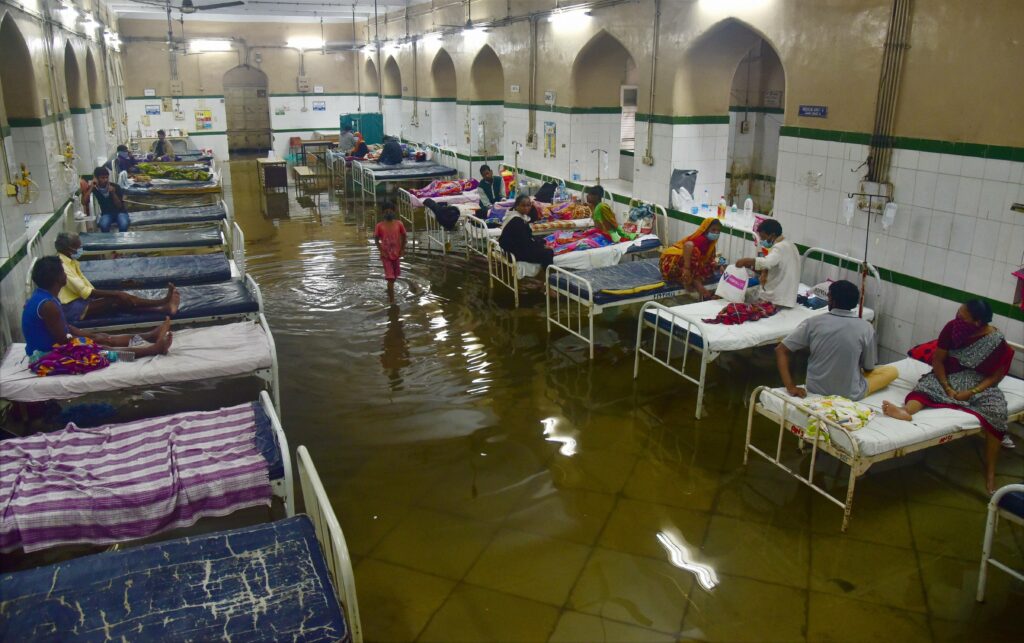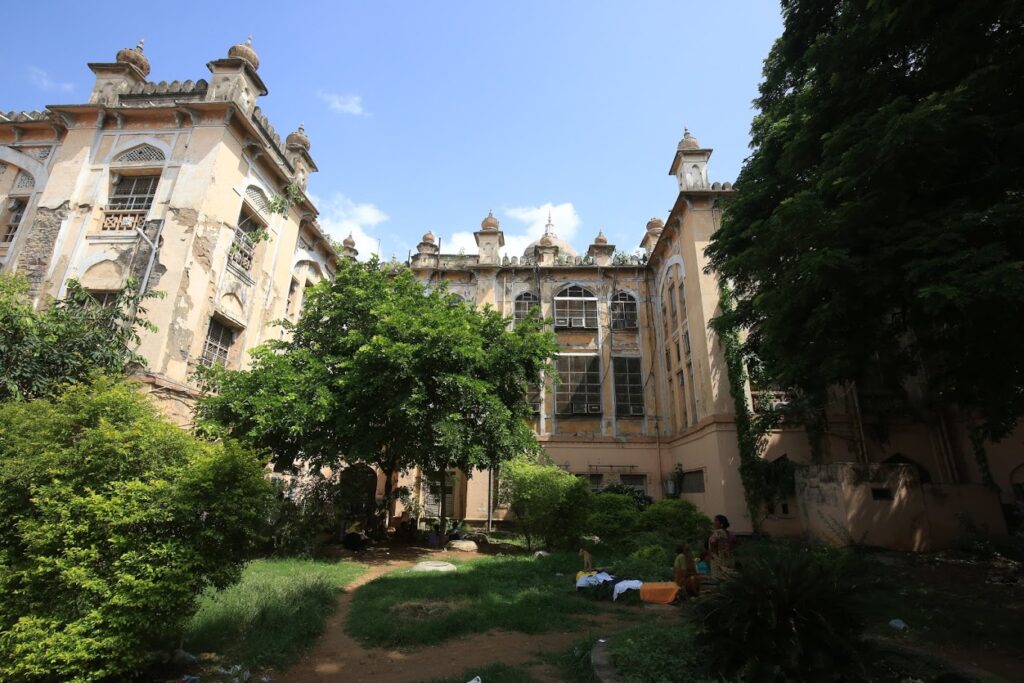Hyderabad: The fate of Osmania General Hospital’s (OGH) old heritage structure continues to hang in the balance, as concerned citizens are hoping that it does not meet the same far as the old Secretariat building, known as the Saifabad palace. However, in the last seven years or so, two reports and a detailed inspection had been carried out by the government officials and different agencies to restore OGH. Still, matters were not taken to the logical end for reasons best known to the state government.
The earliest report on OGH’s restoration goes back to the time of former chief minister of the erstwhile Andhra Pradesh (AP) state K. Rosaiah, under whose period a government order (GO) had been issued in 2010 which said that the old heritage building would be renovated and used to run the out-patient block and other departments.
The 2010 GO MS No. 13 states that a new multi-storeyed block would be built on an area of 12 lakh sq. Feet, while other old and dilapidated buildings housing the Nursing College and hostel would be demolished to create six acres of open land for undertaking construction. The entire OGH premises is spread over 26.5 acres. After that, in 2013, city-based conservation architect GSV Suryanarayana Murthy was appointed as a consultant to restore the OGH’s heritage building.
First detailed 500-page report issued in 2013:
Back then in 2013, under the erstwhile AP government, the Heritage Conservation Committee (HCC) still existed (which looked into matters concerning notified heritage buildings in the city), and had approved the conservation plan.
A conservation architect, who was involved in the process then, recalled that the Telangana agitation had been picking up in 2013, due to which the then government, which was busy dealing with the political situation, did not take the restoration of OGH seriously, especially from 2013 April onwards.
“The consultant conservation architect did an inch-to-inch survey, and a 500-page report was given to the government. It was prepared in 7 months and was submitted to the HCC,” added the architect, who requested anonymity.
Drainage diversions suggested and water-logging issue flagged in the 2013 report:
Earlier this month, the old heritage building of OGH was in the news once again as rainwater had flooded the wards in the building’s ground floor. This, along with other damages in the building, is a reason cited by a section of the pro-demolition lobby of doctors from OGH. However, it may be pointed out here that the 2013 report submitted by Suryanarayana Murthy to the state government had flagged that water-logging was caused due to an improper slope in the premises.
Moreover, a recently laid cement road with no outlets to let rainwater pass, and a blocked sewer passing under OGH, are also believed to have caused the flooding. One can only wonder why, despite this issue being flagged in 2013 itself, was never resolved.

New building block suggestion was given in 2013 report:
In the 2013 report, a new building block was suggested to be built for Rs. 100 crore and restoration of the old structure was proposed for Rs.19 crore then. The new building was to have many other facilities, which were being run from other buildings. However, after Telangana was formed in 2014, chief minister K. Chandrashekhar Rao visited OGH in 2015, which was followed by an announcement of OGH’s demolition.
“Some strong misguidance had transpired in government circles because there is a deep aversion to heritage buildings. There is some background force behind all this,” opined a heritage activist, who did not want to be quoted. When contacted, various government officials did not want to comment, while officials of the State Heritage department said they are not concerned with the OGH’s old structure.
2015 INTACH report and 2019 inspection by AKTC:
In 2015, after KCR announced his decision to demolish the OGH’s heritage structure, it led to a public outcry, following which an expert team from the Indian National Trust for Art, Culture and Heritage (INTACH) submitted after a structural, stability and safety study.
It summarized that the conservation of the in-patient block or the old heritage building should be restored based on heritage conservation principles. In 2019, state officials along with architects from the Aga Khan Trust for Culture (AKTC) also inspected OGH to look at restoration. But that too fell through and was not taken to the logical end.
If Govt City College, built in the same period, is being restored, why not OGH?
Moreover, it is also pertinent to point out that the state High Court, which stands opposite the OGH building, and the Govt City College nearby, both were also built in the same period and designed by the same architect in the first half of the 20th century. The City College today is being restored. Hence, the question that begs to be asked is: if the City College can be restored, why not OGH?
The History:
OGH was completed in 1925 after Hyderabad was affected by the bubonic plague around 1911. The city administration then took care of the issue, following which the then Nizam Osman Ali Khan (1911-48) set up the City Improvement Board (CIB) in 1912 to improve Hyderabad’s infrastructure. It was designed by architect Vincent Esch, who also designed the Victoria Memorial in Kolkata.
The OGH’s old building (along with others like High Court and City College) is an excellent example of the Osmanian style or Indo Saracenic genre of architecture. It is an integral part of Hyderabad’s 20th-century riverscape and skyline. The CIB during the reign of Osman Ali Khan had transformed the medieval city into a modern metropolis, complete with infrastructures like the High Court, railway stations, schools and OGH.
Link to Change.org petition to save OGH: https://bit.ly/30GRtY5

The writer is a Hyderabad-based journalist who has worked with The New Indian Express, The Hindu and Mint in the past.

